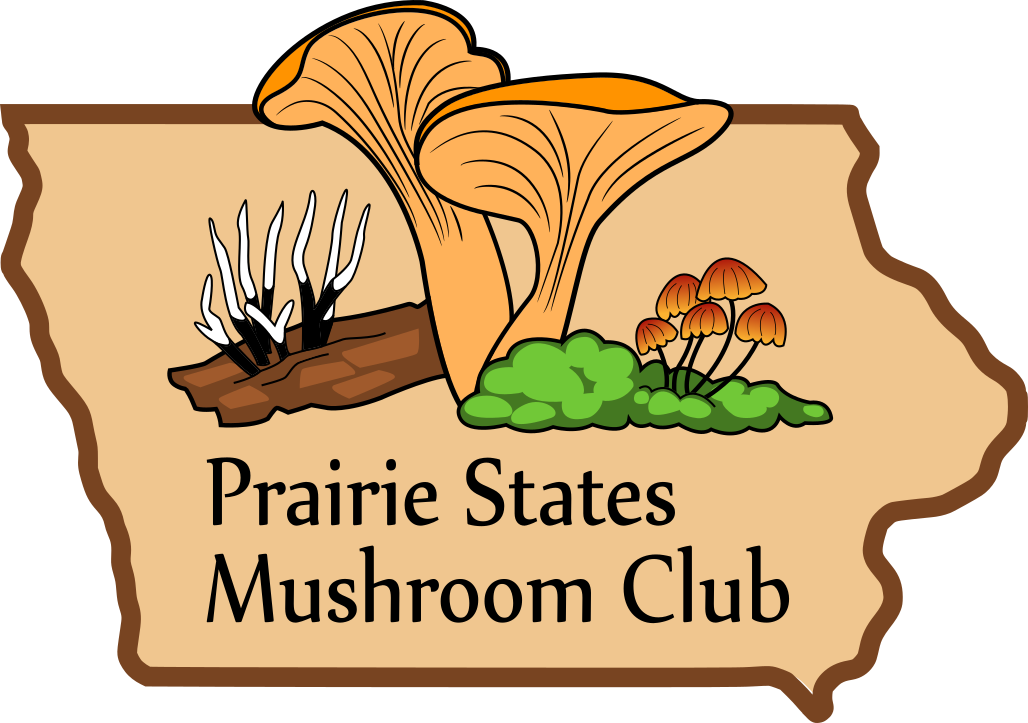Featured Fungus: Panellus (Sarcomyxa) serotina: A New Color For Our Palette
By Dave Layton
Why is green, the most ubiquitous color in nature, so rare in the fungal kingdom? I know it's partly because mushrooms don't have chlorophyll. Many insects, reptiles and amphibians are green but they've evolved camouflage to hide from predators. Apparently fungi aren't concerned about predators. In Fact all the bright and amazing colors fungi come in seem to shout, "Eat me!" Maybe getting eaten actually fosters spore dispersal and mushroom reproduction. In that case colors that camouflage fungi would actually be at a disadvantage, a possible explanation for their rarity..
Before finding Panellus (Sarcomyxa) serotina (late oyster) my experience with green mushrooms was limited to Clitocybe odora (bluish green on top of caps) and a few species of Russula including R. parvovirescens one of my favorites. I believe I saw green Hygrocybes at a foray also. plant leaves are green throughout, however these mushrooms are all white inside. Green is only pigmentation on the cap’s surface All of these fungi have their own shades of green for the artist to conjure up, but late oysters require a new color for our palette. The deep olive green color of late oyster fungi with their light golden gills was almost startling against the background of well decayed white birch that it grew on. No camouflage there. Actually the caps were a variety of shades from olive green to lilac gray to tan. If Anna had one of these on her coloring pages from Symbiosis: (https://static1.squarespace.com/static/63e81a9ffeef135cb70e4eaf/t/656b6d53e21a454655252b3c/1701539157429/Symboisis+Fall+2023.pdf) folks could have a field day with it. Maybe she'll include one in the future.
I'm excited to have found these this November! They will be submitted for genetic sampling as part of the Iowa Fungal Biodiversity Project. According to Alden Dirks as of 2019 Only one sample of this species had been genetically sequenced. I'm sure more have been sequenced since then but my sample will definitely add to the genetic understanding of this variable fungus.
Dried late oyster
Part of the variability of late oysters includes their flavor which apparently ranges from delicious to bitter. Possibly flavor variation is because there are two or more species under this name. So my sample can add to that knowledge also. Another cool thing I'm now noticing is that they are retaining the deep olive color as they dry so anyone viewing them at the Ada Haydon herbarium will be able to see this feature too.
There was a bit of a bitter aftertaste to my sample raw. Some sources say slow cooking can eliminate some of that. I cooked a few bites in olive oil on low for ten minutes. I knew their immediate flavor was pleasant, maybe a little nutty but I thought a slightly bitter aftertaste was still present. Sally also tried them and thought them pleasant. She thought any aftertaste was barely noticeable if at all. We took the next step of having a small meal of eggs cooked over easy with the mushrooms which had been slow cooking in butter and olive oil this time. I also added some bacon grease for flavor before adding the eggs. The mushrooms were quite tasty cooked this way, but what wouldn't be? Sally didn't notice any bitterness. I thought I might have, but it was no where near the lingering bitterness of eating grapefruit, drinking coffee or eating other tart items. There seem to be no digestive problems from this meal either. Therefore I'm pronouncing this population of late oysters edible. It'll be fun to learn exactly what variety these are from the sequencing.
It's exciting that someone like myself with no real scientific training can still add to the body of science through the IA Fungal Biodiversity Project. I encourage everyone who wants to learn more about the strange and different mushrooms they find to participate in this project. To Learn more about it go to: https://www.iowamushroom.org/sequencing. You can enjoy the feeling of accomplishment from adding to the knowledge and understanding of life on earth even if you aren't a brilliant scientist!




